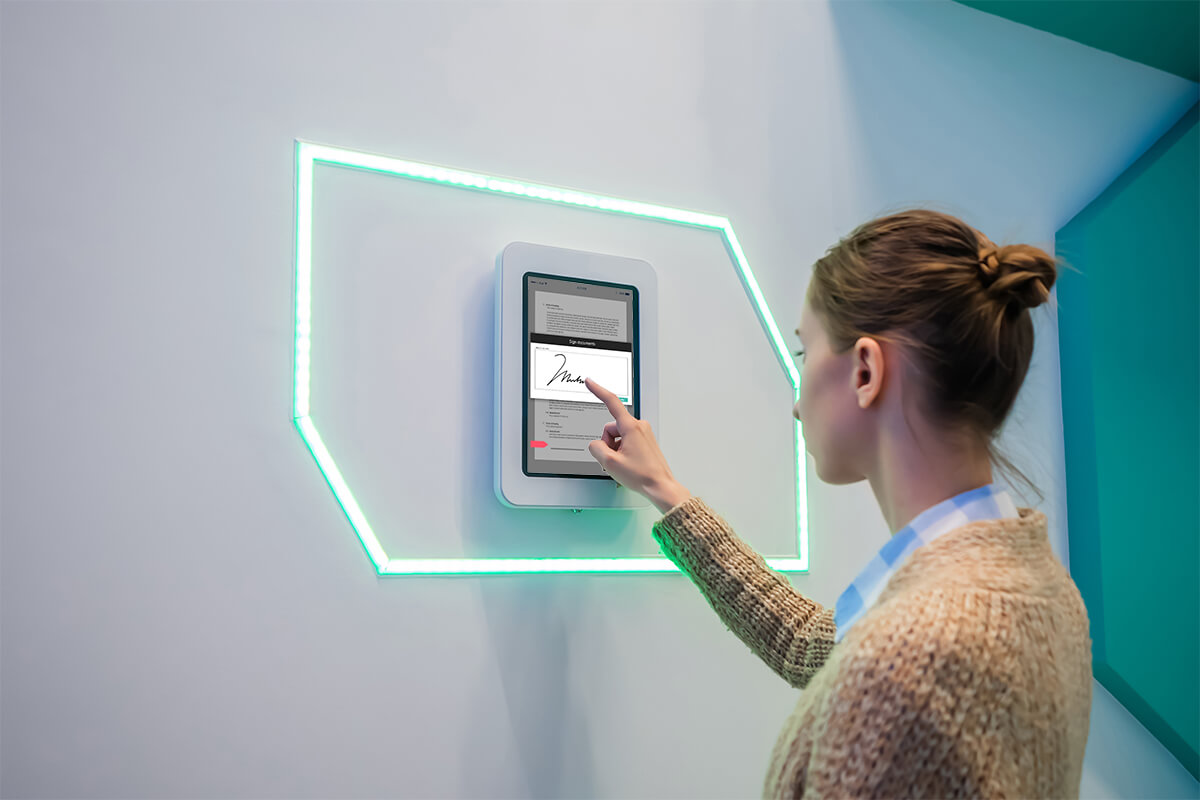It’s no secret that the landscape of work is undergoing a transformation, driven by the rise of hybrid work models. In a world where the boundaries between physical and digital workspaces are blurring, traditional notions of how we define the “office” and “visitors” no longer suffice.
At this point, it’s clear remote work isn’t going away. Yet, with major global companies, including household names like Amazon, Meta, Google and Lyft, enacting return-to-office policies seemingly every day, neither is the physical office.
Shifting priorities in today’s hybrid landscape
A recent Pew Research study shed light on some intriguing statistics related to remote work. It revealed that only 20% of remote-capable workers, or those who could feasibly perform their job duties somewhere other than their company’s physical location, currently work full-time at the office. That’s down from about 60% pre-pandemic.
Despite fewer workers in the office full-time, Pew found security executives ranked workplace violence as their #1 concern. Along those lines, demand for visitor management software is growing at a rate of 10 percent annually.
If it seems like these statistics contradict each other, it’s time to forget everything you think you know about the office, visitors and how people interact with workplaces.
What return-to-office really means
What’s become known as the “return to office” movement is a bit of a misnomer. It’s not about employees going back into the office five days a week. That model was already fizzling out within remote-capable industries before the Covid-19 pandemic, and now there’s no going back.
The “return to office” movement should realistically be characterized as a new era of evolving visitors, workplaces, and the information we gather on both.
Redefining the ‘office’ and ‘visitors’
The term “visitor management” must also be re-examined. The traditional approach to visitor management defined visitors as those who come and go, with minimal privileges and compliance obligations. Likewise, offices were seen as fixed, easily measurable spaces with predictable patterns. However, this approach heightened organizational risk, escalated costs, and diminished experiences for all involved parties.
The new approach treats everyone as a visitor, regardless of their status — be it guests, employees, contractors, supply chain partners, or anyone else. Workspaces extend beyond the traditional office, encompassing homes, coffee shops, coworking spaces and anywhere else people are signing in to work and accessing a company’s network and data. Boundaries can be physical or digital, adding layers of unpredictability and inconsistency.
Put simply, everyone is a visitor and everywhere is a workplace.
A visitor management strategy for today – and tomorrow
This shift in perspective is crucial to ensuring the safety, efficiency, and positive experiences of everyone interacting with our organizations.
To navigate this paradigm shift, consider this framework: Reframe, Rebuild, Reassess, and React.
- Reframe: Begin by understanding the current state of your organization, acknowledging that every individual is a visitor in various spaces. Gather data on diverse work locations, types of workers, and their movement patterns.
- Rebuild: Embrace scalable processes and technology that align with this new perspective. A uniform, technology-driven approach ensures scalability, efficiency, and better data collection.
- Reassess: With the data collected, assess the effectiveness of your implemented changes. Analyze movement patterns, identify security risks, and understand workspace utilization.
- React: Based on the assessment, modify processes, technology, and employee training to enhance security, reduce costs, and improve experiences.
Once you’ve been through these steps, continuously revisit and adapt your approach, acknowledging that the landscape will evolve, demanding a flexible and dynamic response.
By adopting this approach, organizations – whether fully in office, hybrid, or fully remote – can drastically reduce risk, cut costs, and enhance experiences. Employees and visitors will find it easier to navigate, and organizations can align their security measures with the ever-changing landscape of work.
Embrace the future of work with Sign In Solutions
The “return to office” movement is not about going back to what once was; it's about embracing a new, more agile approach to managing the modern workspace. Understanding that everyone is a visitor in different contexts allows us to build a safer, more efficient, and adaptable work environment.
It’s a new era for the way we work, and Sign In Solutions is at the forefront with our comprehensive solutions that merge visitor management, workspace operations and compliance under one seamless platform.
This is a pivotal moment for employers to embrace this shift and reshape their visitor management strategies for the future of work with Sign In Solutions.
